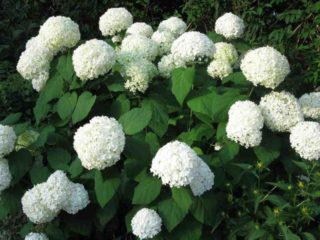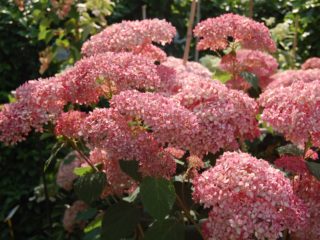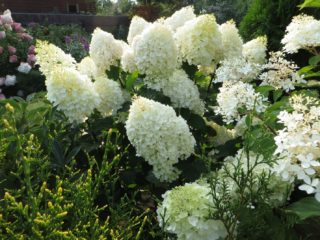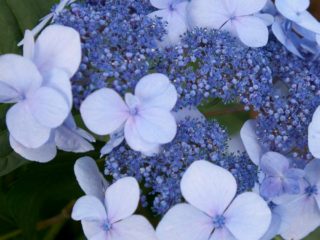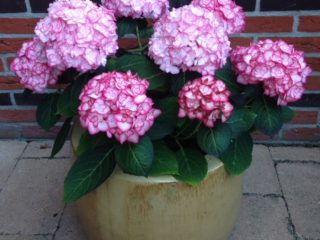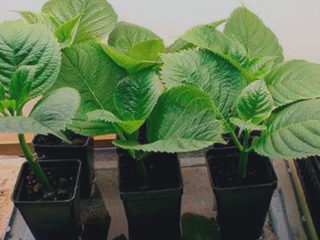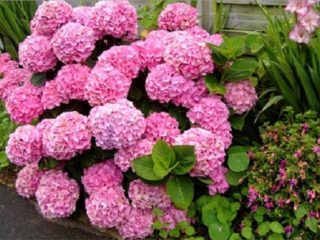Content
When hydrangea leaves turn red, there is no need to panic, because there are understandable reasons for this. Even if the problem lies in damage or disease, all this can be corrected. Hydrangea, although an unpretentious plant, is occasionally susceptible to disease, especially due to improper care. But she is quite patient with treatment and recovers fairly quickly if you catch her in time and take proper care of her.
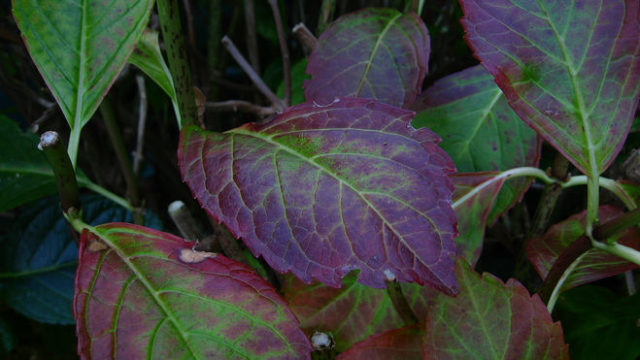
There are many reasons for changes in foliage color.
Why do the hydrangea leaves turn red?
Hydrangea is one of the representatives of the fauna that is resistant to various diseases and pests. But they still do not bypass the plant. Amateurs and novice gardeners are seriously frightened by this phenomenon, because it is not easy to explain. However, there can be many reasons, so you shouldn’t expect a definite answer. You will have to remember the manipulations carried out on the hydrangea, as well as the characteristics of the water, soil and weather conditions in which the shrub grows.
Much depends on how the flowers are watered. Excessive moisture can harm hydrangeas, although some varieties are said to be tolerant of similar conditions. But this does not mean that the plant needs to be watered every day “to capacity.” In addition, the reason may lie in the soil; the gardener did not prepare it in advance, did not take care of fertilizers, or it is depleted and does not nourish the hydrangea as much as it needs. It also happens that the gardener planted the bush incorrectly or damaged the root system during the replanting process. Finally, hydrangea can be plagued by fungal diseases, but they are treatable.
Causes of red leaves in hydrangea
Hydrangeas, especially some of its varieties, have strong immunity and endurance against many diseases, as well as weather conditions. But what happens is that the flower begins to change in appearance, and for the worse. Many people know that loss of foliage color means chlorosis. But when the leaves of different varieties of hydrangea, such as bigleaf, turn red, gardeners begin to look for answers.
It is worth noting that redness manifests itself in different ways. The color change can begin from different edges of the sheet or from the middle. You may notice that red spots have appeared on the leaves of the hydrangea. All this expresses different reasons for such modifications.
In order not to panic, it is worth stocking up on information in advance about what can harm the hydrangea - from mechanical manipulations with it to the weather conditions of its growth. It is noteworthy that the plant needs close attention the first two years after planting - is the soil good, is the water harming it, is the hydrangea not freezing in the first winter.
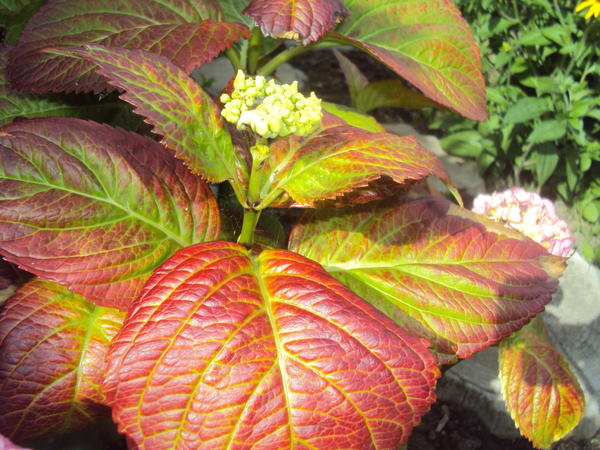
When the foliage turns red, you should pay attention to watering and soil fertility
Wrong choice of seedling
In the process of planting new seedlings, you must adhere to several rules, which include the correct selection of a planting site, preparation of good soil, lighting level, and planting time.
Firstly, an inexperienced gardener could neglect the planting rules and root the hydrangea in the summer, when the plant should have already started flowering, or the daytime sun was too “aggressive”. All this is unacceptable. It is planted either in spring or autumn, shortly before the start of sap flow or before sending the hydrangea “to rest.”
In addition, the seedling must be in the ground before planting, that is, it must be purchased in a pot, container or other container. During the planting process, the gardener could compact the soil too much, and the young plant literally cannot breathe.
The roots could have been damaged during planting, replanting, or during transportation of the seedling to a new location.
Improper care
Initial care for a young hydrangea should be filled with attention to the flower and care. We are talking not only about timely watering, but also about the composition of the soil, which is regularly fertilized at first. Also, its condition depends on pruning. Don't forget about mulching.
So, it is important to remember that the acidity of hydrangea soil should be about 5 pH, despite the fact that many representatives of this flora grow well in slightly acidic or even neutral soils.But we are talking specifically about initial care, including regular feeding of the flower with mineral and organic fertilizers and consolidation of the result in the form of mulching.
Many beginners make a big mistake in the process and time of pruning, cutting off the stems “at random” almost at the peak of flowering. Thus, natural forces literally ooze out from the plant without being deposited in the foliage and inflorescences, hence the modifications in their color and shape.

Redness of leaves can be caused by improper care
Adverse weather conditions
Hydrangea tolerates harsh winters well and does not suffer much from the summer heat. However, you should be careful with the latter, because reddening of the leaves can be caused by too much exposure to direct sunlight after summer watering of the bush in the middle of the day, during which the foliage gets burned. Also, preventive treatment at the wrong time of day can turn into disaster. If a hydrangea painfully tolerates the scorching sun, it is worth giving it shade, partial shade, or diffuse sunlight, which is provided by transplanting or “manually” covering the plant with a canvas stretched on a frame.
During wintering, young shoots may freeze, although they usually “come to life” in the spring. Perhaps, under the weight of snow on hydrangeas without pruning, damage occurred to the stems, which, naturally, do not receive vital juices well during the flowering period. This can be eliminated by proper removal and further processing of damaged branches.
Diseases and pests
Diseases and pests, no matter how resistant the hydrangea is to them, overcome it from time to time. Speaking about reddened leaves, especially about individual brown spots, one can assume a fungal disease.The problem may also lie in the fact that the soil in which the shrub grows is depleted, either too dry or overwatered.
Among the pests, the worst enemy is considered to be the aphid, as well as the root-knot nematode, which feeds on hydrangea juices, which it lacks for adequate functioning. If you don’t catch it in time, the reddening leaves will gradually fall off, and soon the entire plant will die behind them.
What to do if hydrangea leaves turn red
If the leaves of paniculata, large-leaved or any other hydrangea turn red, measures must be taken. Of course, you first need to decide on the cause, since it makes no sense to start treating the plant for a non-existent disease, increasing the normal acidity of the soil and watering the choking plant even more abundantly.
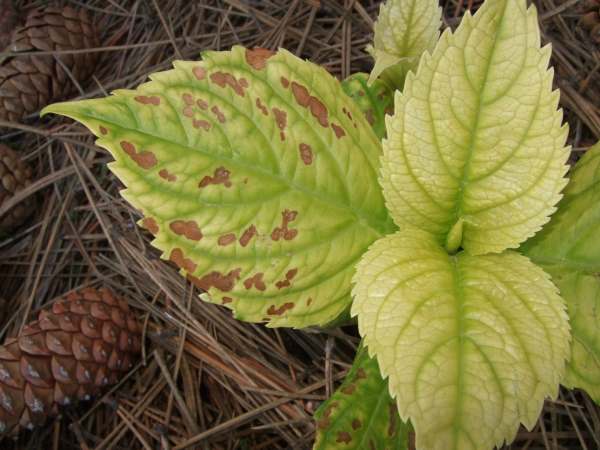
Spots on foliage indicate the presence of disease
If brown spots appear on the crown, this is undoubtedly a fungal disease, which is treated with fungicides, for example, Fundazol, Okihom, Khom, Abiga-Pik. Treat the foliage on both sides twice, with a break of 2 weeks. To strengthen the result, you need to fertilize the soil with microelements, in particular magnesium sulfate.
In early spring or autumn, the plant is sprayed with the same preparations or biofungicides - Fitosporin, a mixture of Alirin and Gamair.
The rest depends on the cause of the redness. If there is an excess of moisture, water a little less often. Protect from the scorching sun. Check the soil for acidity and fertilize it with mineral and organic compounds once a season.In winter and summer they mulch to ensure the required temperature (mulch protects against overheating, as well as from the evaporation of moisture with beneficial substances).
How to feed hydrangea when the leaves turn red
If the leaves turn red due to depletion of the soil, feed it. Due to improper acidity, the plant cannot absorb micro- and macroelements from the soil necessary for development and growth. The folk method involves mixing 10 liters of water with 1 tsp. lemon juice or oxalic acid and pour this solution over the hydrangea.
If it turns out that the redness of the leaves is due to damage to the roots, the situation is corrected by feeding the soil with a drug that stimulates their growth. This is done three times a month, along with sufficient watering. Feeding is resumed after the hydrangea’s root system has been restored.
Advice from experienced gardeners
On the topic of why hydrangea leaves turn red, there are many videos filmed by experienced gardeners who show examples and explain the reasons for the plant’s inappropriate behavior.
Many advise not to abandon the plant due to its unpretentiousness, but to continue regular feeding and preventive treatment of hydrangeas against diseases and pests, using biological products or folk remedies, which will contribute to their better growth. But the most important rule among experienced gardeners is adequate watering. Overdrying is definitely harmful. But an excess of moisture, firstly, washes away useful substances, and secondly, leads to rotting of the root system.
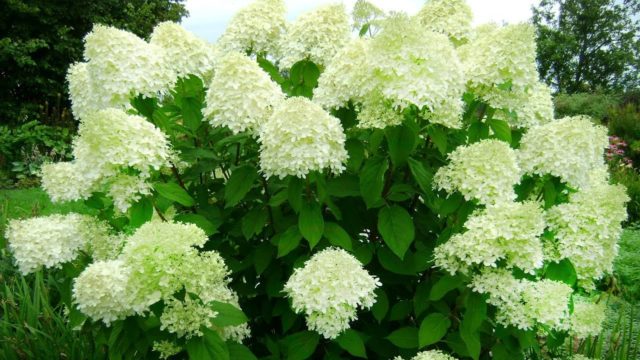
To avoid problems, you should take care of the flower from the very beginning
Conclusion
Separate topics are created on plant growing forums regarding the problem of hydrangea leaves turning red. Inexperienced people ask for advice and master gardeners and receive comforting answers: whatever the problem is, it can be solved. Weather conditions cannot be changed, but the plant can be moved. Proper pruning and regular feeding will prevent the appearance of diseases. Attentive attitude and timely care are the main solution to the problem.
